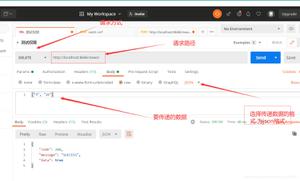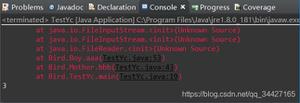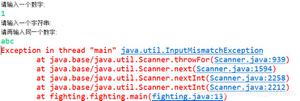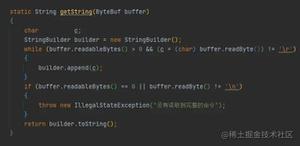分析Java中ArrayList与LinkedList列表结构的源码
一、ArrayList源码分析(JDK7)
ArrayList内部维护了一个动态的Object数组,ArrayList的动态增删就是对这个对组的动态的增加和删除。
1、ArrayList构造以及初始化
ArrayList实例变量
//ArrayList默认容量
private static final int DEFAULT_CAPACITY = 10;
//默认空的Object数组, 用于定义空的ArrayList
private static final Object[] EMPTY_ELEMENTDATA = {};
//ArrayList存放存放元素的Object数组
private transient Object[] elementData;
//ArrayList中元素的数量
private int size;
ArrayList构造函数:
无参构造函数: 即构造一个空的Object[]
public ArrayList() {
super();
this.elementData = EMPTY_ELEMENTDATA;
}
指定容量大小构造:
public ArrayList(int initialCapacity) {
super();
if (initialCapacity < 0)
throw new IllegalArgumentException("Illegal Capacity: "+
initialCapacity);
this.elementData = new Object[initialCapacity];
}
指定某一实现Collection接口的集合构造:
public ArrayList(Collection<? extends E> c) {
elementData = c.toArray();
size = elementData.length;
// c.toArray might (incorrectly) not return Object[] (see 6260652)
if (elementData.getClass() != Object[].class)
elementData = Arrays.copyOf(elementData, size, Object[].class);
}
这里也说明了Collection的作用, java-collection-framwork设计Collection接口而不是直接使用List,Set等接口的原因。
2、ArrayList的容量分配机制
ArrayList的容量上限: ArrayList容量是有上限的,理论允许分配Integer.Max_VALUE - 8大小的容量。但是能分配多少还跟堆栈设置有关, 需要设置VM参数
private static final int MAX_ARRAY_SIZE = Integer.MAX_VALUE - 8;
调用Add方法时扩容规则
public boolean add(E e) {
ensureCapacityInternal(size + 1); // Increments modCount!!
elementData[size++] = e;
return true;
}
ensureCapacityInternal(int)方法实际上确定一个最小扩容大小。
private void ensureCapacityInternal(int minCapacity) {
if (elementData == EMPTY_ELEMENTDATA) {
minCapacity = Math.max(DEFAULT_CAPACITY, minCapacity);
}
ensureExplicitCapacity(minCapacity);
}
private void ensureExplicitCapacity(int minCapacity) {
modCount++;
// overflow-conscious code
if (minCapacity - elementData.length > 0)
grow(minCapacity);
}
关于modCount: modCount定义在抽象类AbstratList中, 源码的注释基本说明了它的用处:在使用迭代器遍历的时候,用来检查列表中的元素是否发生结构性变化(列表元素数量发生改变的一个计数)了,主要在多线程环境下需要使用,防止一个线程正在迭代遍历,另一个线程修改了这个列表的结构。
grow方法为真正的扩容方法
private void grow(int minCapacity) {
// overflow-conscious code
int oldCapacity = elementData.length;
int newCapacity = oldCapacity + (oldCapacity >> 1);
if (newCapacity - minCapacity < 0)
newCapacity = minCapacity;
if (newCapacity - MAX_ARRAY_SIZE > 0)
newCapacity = hugeCapacity(minCapacity);
// minCapacity is usually close to size, so this is a win:
elementData = Arrays.copyOf(elementData, newCapacity);
}
其中对大容量扩容多少还有个hugeCapacity方法
private static int hugeCapacity(int minCapacity) {
if (minCapacity < 0) // overflow
throw new OutOfMemoryError();
return (minCapacity > MAX_ARRAY_SIZE) ?
Integer.MAX_VALUE :
MAX_ARRAY_SIZE;
}
总结:
每次扩容都会伴随着数组的复制操作, 因此一次给定恰当的容量会提高一点性能。
下图是我归纳的整个扩容流程:

3.ArrayList迭代器
ArrayList的迭代器主要有两种Itr和ListItr, 但是在jDK1.8中还添加了一个ArrayListSpliterator, 下面分别学一下Itr和ListItr的源码分析。
(1)Itr:只能向后遍历
private class Itr implements Iterator<E> {
int cursor; // index of next element to return
int lastRet = -1; // index of last element returned; -1 if no such
//expectedModCount 是modCount的一个副本
int expectedModCount = modCount;
public boolean hasNext() {
return cursor != size;
}
@SuppressWarnings("unchecked")
public E next() {
checkForComodification();
//记录当前位置
int i = cursor;
if (i >= size)
throw new NoSuchElementException();
Object[] elementData = ArrayList.this.elementData;
if (i >= elementData.length)
throw new ConcurrentModificationException();
//下一个元素的位置
cursor = i + 1;
return (E) elementData[lastRet = i];
}
//使用迭代器的remove方法
public void remove() {
if (lastRet < 0)
throw new IllegalStateException();
checkForComodification();
try {
//注意内部类调用外部类的方式
ArrayList.this.remove(lastRet);
//remove之后需要重新调整各个指针的位置
cursor = lastRet;
lastRet = -1;
expectedModCount = modCount;
} catch (IndexOutOfBoundsException ex) {
throw new ConcurrentModificationException();
}
}
final void checkForComodification() {
if (modCount != expectedModCount)
throw new ConcurrentModificationException();
}
}
从源码中可以看出Itr迭代器是向前迭代器, 它提供了一个next方法用于获取ArrayList中的元素。
checkForComodification是java-collection-framwork中的一种fail-fast的错误检测机制。在多线程环境下对同一个集合操作,就可能触发fail-fast机制, 抛出ConcurrentModificationException异常。
Itr迭代器定义了一个expectedModCount记录modCount副本。在ArrayList执行改变结构的操作的时候例如Add, remove, clear方法时modCount的值会改变。
通过Itr源码可以看出调用next和remove方法会触发fail-fast检查。此时如果在遍历该集合时, 存在其他线程正在执行改变该集合结构的操作时就会发生异常。
(2)ListItr:支持向前和向后遍历,下面看看ListItr的源码:
private class ListItr extends Itr implements ListIterator<E> {
ListItr(int index) {
super();
cursor = index;
}
public boolean hasPrevious() {
return cursor != 0;
}
public int nextIndex() {
return cursor;
}
public int previousIndex() {
return cursor - 1;
}
@SuppressWarnings("unchecked")
public E previous() {
checkForComodification();
//arrayList前一个元素的位置
int i = cursor - 1;
if (i < 0)
throw new NoSuchElementException();
Object[] elementData = ArrayList.this.elementData;
if (i >= elementData.length)
throw new ConcurrentModificationException();
cursor = i;
return (E) elementData[lastRet = i];
}
//该迭代器中添加了set方法
public void set(E e) {
if (lastRet < 0)
throw new IllegalStateException();
checkForComodification();
try {
ArrayList.this.set(lastRet, e);
} catch (IndexOutOfBoundsException ex) {
throw new ConcurrentModificationException();
}
}
//该迭代器添加了add方法
public void add(E e) {
checkForComodification();
try {
int i = cursor;
ArrayList.this.add(i, e);
//重新标记指针位置
cursor = i + 1;
lastRet = -1;
expectedModCount = modCount;
} catch (IndexOutOfBoundsException ex) {
throw new ConcurrentModificationException();
}
}
}
ListItr的实现基本与Itr一致, 添加了可以先前遍历的方法以及add与set方法。
(3)使用java.util.concurrent中的CopyOnWriteArrayList解决fast-fail问题
CopyOnWriteArrayList是线程安全的, 具体看一下它的add方法源码:
public boolean add(E e) {
final ReentrantLock lock = this.lock;
lock.lock();
try {
Object[] elements = getArray();
int len = elements.length;
Object[] newElements = Arrays.copyOf(elements, len + 1);
newElements[len] = e;
setArray(newElements);
return true;
} finally {
lock.unlock();
}
}
CopyOnWriteArrayList就是写时复制的ArrayList。当开始写数据的操作时候, Arrays.copyOf一个新的数组, 这样不会影响读操作。
这样的代价就是会损耗内存, 带来性能的问题。CopyOnWriteArrayList写的时候在内存中生成一个副本对象, 同时原来的对象仍然存在。
CopyOnWriteArrayList无法保证数据实时的一致, 只能保证结果的一致。适用于并发下读多写少得场景, 例如缓存。
(4)ArrayList的其他方法源码:
一个私有方法batchRemove(Collection<?>c, boolean complement), 即批量移除操作
private boolean batchRemove(Collection<?> c, boolean complement) {
//下面会提到使用final的原因
final Object[] elementData = this.elementData;
int r = 0, w = 0;
boolean modified = false;
try {
//遍历List中的元素,进行验证
for (; r < size; r++)
if (c.contains(elementData[r]) == complement)
elementData[w++] = elementData[r];
} finally {
//try中如果出现异常,则保证数据一致性执行下面的copy操作
if (r != size) {
System.arraycopy(elementData, r,
elementData, w,
size - r);
w += size - r;
}
//清理无用的元素, 通知GC回收
if (w != size) {
// clear to let GC do its work
for (int i = w; i < size; i++)
elementData[i] = null;
modCount += size - w;
size = w;
modified = true;
}
}
return modified;
}
final修饰的变量指的是同一个引用, 为了后面保持数据的一致性。
此方法,想保留Collection c中的元素时, complement值为true; 想移除c中的元素时, complement值为false。这样就分别变成了retainAll和removeAll方法。
swap:交换arrayList中的某两个位置的
二、LinkedList源码分析(JDK7)
LinkedList即链表, 相对于顺序表, 链表存储数据不需要使用地址连续的内存单元。减少了修改容器结构而带来的移动元素的问题,顺序访问相对高效。
1、结点(Node)的定义
JDK中的LinkedList是双向链表, 每个结点分别存有上一个结点和下一个结点的信息。它的定义如下:
private static class Node<E> {
E item;
Node<E> next;
Node<E> prev;
Node<E> (Node<E> prev, E element, Node<E> next) {
this.item = element;
this.next = next;
this.prev = prev;
}
}
2、LinkedList构造以及初始化
成员: LinkedList中维护了3个成员变量, 用以记录链表中结点的个数, 结点的前驱以及后继
transient int size = 0;
transient Node<E> first;
transient Node<E> last;
构造函数: 默认构造函数即构造一个空的LinkedList
public LinkedList() {}
或者根据其他容器进行构造, 后面我们会自己写一个构造一个有序的链表
public LinkedList(Collection<? extends E> c) {
this();
addAll(c);
}
这里给出一点补充, 关于泛型修饰符? super T 与 ? extends T的区别,参见这篇文章泛型中? super T和? extends T的区别
3、LinkedList的结构操作
头插法: 即在链表头插入一个元素
private void linkFirst(E e) {
final Node<E> f = first;
final Node<E> newNode = new Node<>(null, e, f);
first = newNode;
//判断是否是空链表
if (f == null)
last = newNode;
else
f.prev = newNode;
size++;
modCount++;
}
尾插法: 即在链表尾部插入一个元素
void linkLast(E e) {
final Node<E> l = last;
final Node<E> newNode = new Node<>(l, e, null);
last = newNode;
if (l == null)
first = newNode;
else
l.next = newNode;
size++;
modCount++;
}
插入到当前结点之前: 找当前结点的前驱
void linkBefore(E e, Node<E> succ) {
//确定当然结点非空
final Node<E> pred = succ.prev;
final Node<E> newNode = new Node<>(pred, e, succ);
succ.prev = newNode;
//判断当前结点是否是第一个结点
if (pred == null)
first = newNode;
else
pred.next = newNode;
size++;
modCount++;
}
头删法: 删除链表的第一个结点
private E unlinkFirst(Node<E> f) {
// assert f == first && f != null;
final E element = f.item;
final Node<E> next = f.next;
f.item = null;
f.next = null; // help GC
first = next;
if (next == null)
last = null;
else
next.prev = null;
size--;
modCount++;
return element;
}
尾删法:删除链表的最后一个结点
private E unlinkLast(Node<E> l) {
//保证l==last 并且l != null
final E element = l.item;
final Node<E> prev = l.prev;
l.item = null;
l.prev = null; // help GC
last = prev;
if (prev == null)
first = null;
else
prev.next = null;
size--;
modCount++;
return element;
}
4、保持List接口与Deque的一致性
List接口允许使用下标来实现对容器的随机访问,对于数组这种实现随机访问是很容易的。对于链表,JDK也从逻辑上利用链表中结点的计数给出了随机访问的实现
Node<E> node(int index) {
//确保index的正确性
if (index < (size >> 1)) {
Node<E> x = first;
for (int i = 0; i < index; i++)
x = x.next;
return x;
} else {
Node<E> x = last;
for (int i = size - 1; i > index; i--)
x = x.prev;
return x;
}
}
index 属于前半部分的计数, 从头遍历查找。index属于后半部分的计数, 从末尾遍历查找。充分利用双向链表的特点。
因此,add(int index, T t), get(int), set(int)等方法就可以很容易的实现。
LinkedList实现了Deque接口, 也就是LinkedList实现了双端队列容器的方法,下面给出一些API的总结。
5、LinkedList的遍历
既然LinkedList是双向链表, 自然就可以前后遍历。与ArrayList同样, 涉及到多线程操作容器的时候LinkedList也会出现fail-fast问题。
对于fail-fast问题上篇已经讲解过, 这里就不说了。
关于迭代器,LinkedList有listIterator双向迭代器, 和DescendingIterator逆序迭代器。都很简单。源码不在分析
如果遍历元素的话, 随机访问的代价是比较大得。
三、LinkedList,ArrayList, Vector总结
1、LinkedList与ArrayList
ArrayList是实现了基于动态数组的数据结构,LinkedList基于链表的数据结构。
对于随机访问get和set,ArrayList觉得优于LinkedList,因为LinkedList要移动指针。
对于新增和删除操作add和remove,LinedList比较占优势,因为ArrayList要移动数据。这一点要看实际情况的。若只对单条数据插入或删除,ArrayList的速度反而优于LinkedList。但若是批量随机的插入删除数据,LinkedList的速度大大优于ArrayList. 因为ArrayList每插入一条数据,要移动插入点及之后的所有数据。
2、ArrayList与Vector
vector是线程同步的,所以它也是线程安全的,而arraylist是线程异步的,是不安全的。如果不考虑到线程的安全因素,一般用arraylist效率比较高。
如果集合中的元素的数目大于目前集合数组的长度时,vector增长率为目前数组长度的100%,而arraylist增长率为目前数组长度的50%.如过在集合中使用数据量比较大的数据,用vector有一定的优势。
如果查找一个指定位置的数据,vector和arraylist使用的时间是相同的,都是0(1),这个时候使用vector和arraylist都可以。而如果移动一个指定位置的数据花费的时间为0(n-i)n为总长度,这个时候就应该考虑到使用linklist,因为它移动一个指定位置的数据所花费的时间为0(1),而查询一个指定位置的数据时花费的时间为0(i)。
ArrayList 和Vector是采用数组方式存储数据,此数组元素数大于实际存储的数据以便增加和插入元素,都允许直接序号索引元素,但是插入数据要设计到数组元素移动等内存操作,所以索引数据快插入数据慢,Vector由于使用了synchronized方法(线程安全)所以性能上比ArrayList要差,LinkedList使用双向链表实现存储,按序号索引数据需要进行向前或向后遍历,但是插入数据时只需要记录本项的前后项即可,所以插入数度较快!
以上是 分析Java中ArrayList与LinkedList列表结构的源码 的全部内容, 来源链接: utcz.com/p/209552.html









